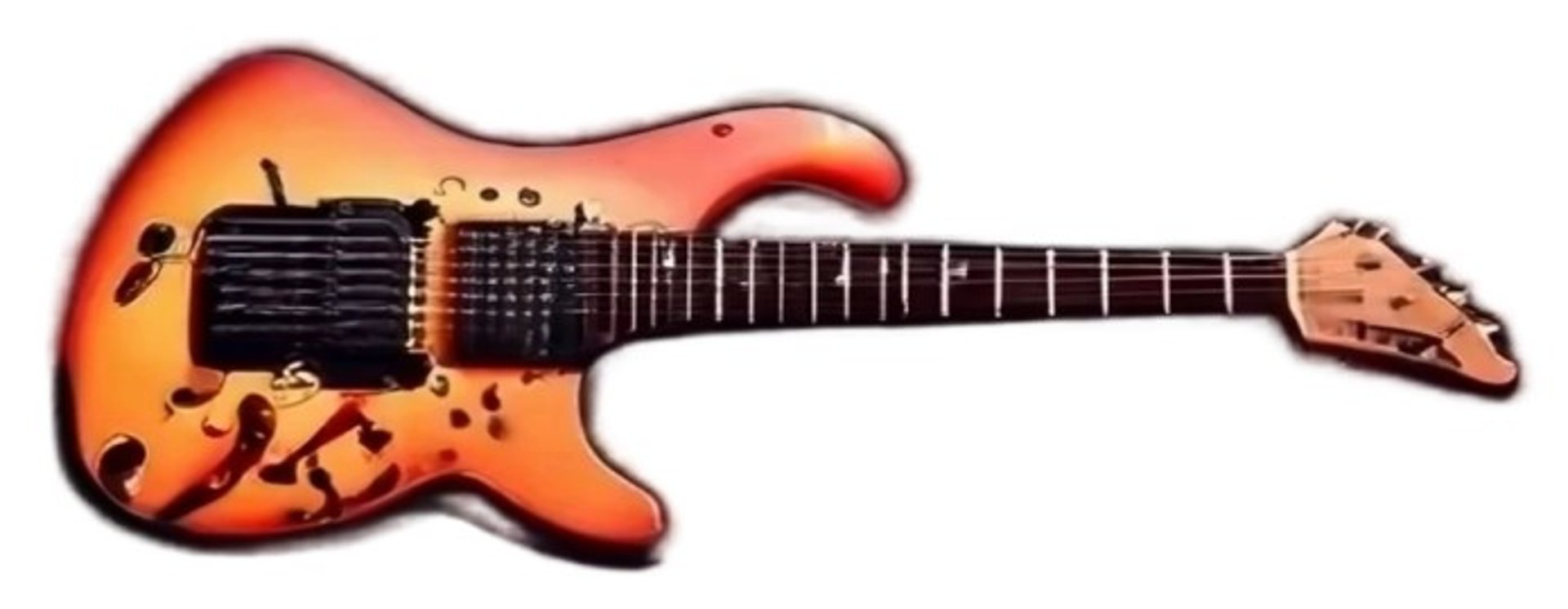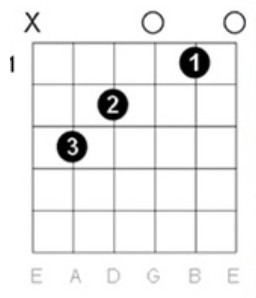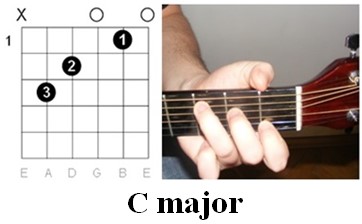
Step-by-Step Instructions to Play the C Major Chord
Master the C Major Chord with our easy, step-by-step guide. Learn correct finger placement, improve your technique and play this essential chord with confident!
magicchords.com
10/29/2025


Learn how to play the C Major Chord with clear, step-by-step instructions. Master finger placement, perfect your sound, and build a strong foundation for beginner guitar success.
Learning to play the C Major Chord is one of the most important milestones for any beginner guitarist. This chord is fundamental in countless songs across multiple genres, making it essential for building a strong foundation in guitar playing. Whether you are completely new to the instrument or looking to refine your technique, understanding the C Major chord will open the door to smoother transitions and richer musical expression.
Play The C Major Chord - Content:
1. Introduction to the C Major Chord
2. Why the C Major Chord Matters in Music
3. Simple Finger Placement for the C Major Guitar Chord
4. Step-by-Step Guide to Playing the C Major Chord
5. Common C Major Chord Mistakes and How to Fix Them
6. Benefits of Learning the C Major Guitar Chord for Beginners
7. Practical Tips for Mastering the C Major Chord Faster
8. How to Strum the C Major Chord Smoothly and Confidently
9. Transitioning Effortlessly To and From the C Major Chord
The C major chord is often one of the first chords taught to beginners because of its versatility and relatively simple finger placement. Playing it correctly ensures that your chords sound clean, professional, and harmonious. Many beginners struggle initially with the spacing of their fingers or the pressure applied to each string, which can lead to muted or buzzing notes. That’s why following clear, step-by-step instructions is crucial for mastering this chord efficiently. In this guide, we will break down the process of learning the C Major Chord into simple, manageable steps.
From proper hand positioning to finger placement and strumming techniques, you’ll gain the confidence to play this chord accurately and consistently. You will also learn tips for avoiding common mistakes and strategies for transitioning smoothly between the C Major chord and other essential chords. By dedicating a little time each day to practice and following these instructions carefully, the C major chord will become second nature. Soon, you’ll be able to play it effortlessly in songs, helping you progress quickly and enjoy the satisfaction of making beautiful music. Mastering the C Major Chord is a key step toward becoming a versatile and confident guitarist.


Useful advices for beginner guitar players 1: Mastering the guitar takes patience and consistent practice, especially when learning to switch smoothly between chords. Many beginners start with simple progressions that include the C major chord, as it helps build strength and coordination in the fretting hand. Exploring songs like Hurt can also deepen understanding, as the guitar chords for Hurt by Johnny Cash combine emotional depth with straightforward chord changes. By practicing these transitions slowly and focusing on clean strumming, players can improve their tone, rhythm, and confidence, eventually playing songs more fluidly while expressing genuine feeling through every note.
Introduction to the C Major Chord
The C Major Chord is one of the most fundamental chords for guitarists and serves as a cornerstone for learning other chords and building musical skills. It is widely used in many genres, including pop, rock, folk, and classical music, due to its bright and harmonious sound. For beginners, the C major chord is often the first chord learned, as it provides a simple yet powerful foundation for understanding finger placement, chord transitions, and rhythm.


To play the C Major Chord, proper finger positioning is essential. The index finger presses the first fret of the B string, the middle finger the second fret of the D string, and the ring finger the third fret of the A string. Strumming all strings except the low E string produces a clear, resonant sound. Mastering the C major chord not only enhances your ability to play songs but also builds confidence and dexterity in your fretting hand. With consistent practice, this chord becomes a stepping stone to more complex chords and musical creativity.
Why the C Major Chord Matters in Music
The C Major Chord holds a special place in music, especially for guitarists and pianists, due to its simplicity, versatility, and foundational role in music theory. It is one of the first chords taught to beginners because it lays the groundwork for understanding harmony, chord progressions, and musical structure. The bright, clear tone of the C major chord makes it suitable for countless songs across genres, from pop and rock to folk and classical music, allowing musicians to express emotion and creativity effectively.


Beyond its practical use, the C Major Chord is central in music theory. It is the root of the C major scale, which contains no sharps or flats, making it one of the most accessible keys for beginners to learn. Understanding this chord helps musicians recognize patterns, develop finger strength and dexterity, and transition smoothly to other chords.
Learning the C major chord also improves musical confidence. By mastering its proper finger placement and strumming techniques, beginners can play a wide variety of songs, experiment with chord progressions, and gain a deeper appreciation for how chords interact. The C Major Chord is not just a building block—it is a gateway to musical expression and a vital tool for any aspiring musician.
Simple Finger Placement for the C Major Guitar Chord
Learning the C Major Guitar Chord begins with understanding proper finger placement, which is essential for producing a clean, resonant sound. This chord is often one of the first chords taught to beginners because it is relatively simple yet highly versatile, appearing in countless songs across multiple genres. Proper finger positioning ensures that each string rings clearly and prevents buzzing or muted notes.
To play the C major chord on the guitar, start by placing your ring finger on the third fret of the A string (the fifth string). Next, position your middle finger on the second fret of the D string (the fourth string). Finally, place your index finger on the first fret of the B string (the second string). Make sure your fingers are curved so that the tips press the strings firmly without touching adjacent strings. Avoid pressing too hard, as this can strain your hand, or too lightly, which can mute the notes.


Strumming the chord involves playing from the A string downward, leaving the low E string (sixth string) muted. With consistent practice, your fingers will naturally find the correct positions, and transitions to other chords will become smoother. Mastering this simple finger placement for the C Major Guitar Chord builds confidence, strengthens your fingers, and lays the foundation for more complex chords and chord progressions, allowing you to play songs more easily and expressively.
Step-by-Step Guide to Playing the C Major Chord
The C Major Chord is a fundamental chord for guitarists and serves as an essential building block for learning other chords and songs. Its bright, harmonious sound makes it popular across genres such as pop, rock, folk, and classical music. For beginners, mastering the C major chord is a key step in developing finger strength, dexterity, and smooth chord transitions. To play the C Major Chord, start with proper finger placement. Place your ring finger on the third fret of the A string (fifth string), your middle finger on the second fret of the D string (fourth string), and your index finger on the first fret of the B string (second string). Curve your fingers so the tips press the strings cleanly without touching adjacent strings.


Hold your thumb behind the neck to support your hand, keeping your wrist relaxed to avoid tension. When strumming, play from the A string downward, leaving the low E string (sixth string) muted. Each note should sound clear and balanced; adjust finger pressure if any notes buzz or sound muted. Practicing transitions between the C major chord and other basic chords, such as G major, F major and A minor chord, helps build fluency and confidence. With consistent practice, the C Major Chord will become second nature, allowing you to play a wide range of songs effortlessly. Mastering this chord is not only a technical achievement but also a gateway to greater musical expression and creativity on the guitar.
C Major Chord Mistakes and How to Fix Them
The C Major Chord is one of the first chords every guitarist learns, but beginners often make common mistakes that affect sound quality and playing comfort. Identifying and correcting these errors early helps improve technique and builds confidence. A frequent mistake is incorrect finger placement. Beginners may flatten their fingers, causing muted or buzzing strings. To fix this, ensure your fingers are curved and press the strings with the tips, avoiding contact with neighboring strings.


Another common issue is strumming too many strings. The low E string (sixth string) should remain muted when playing the C major chord. Lightly resting your thumb on the back of the neck helps control pressure and wrist alignment, producing a clean tone. Many players also struggle with tension in the hand or wrist. Keeping your hand relaxed and your thumb behind the neck allows smoother transitions between chords and prevents fatigue.
Rushing transitions can lead to sloppy playing. Practice slowly, focusing on finger accuracy and clarity. Over time, speed will improve naturally. By addressing these C Major Chord mistakes—finger placement, string muting, hand tension, and transition speed—beginners can produce a clear, resonant chord, improving their overall guitar skills and laying the foundation for mastering more complex chords.
Benefits of Learning the C Major Guitar Chord for Beginners
Learning the C Major Guitar Chord is one of the most important steps for beginners. This chord is widely used in countless songs, making it a versatile and practical starting point for anyone learning the guitar. Mastering the C major chord helps beginners develop finger strength, dexterity, and proper hand positioning, which are essential for playing more complex chords later.
The C Major Chord also improves musical understanding. It introduces players to basic chord theory, helping them recognize patterns and progressions that form the foundation of many songs. Practicing this chord builds confidence, as beginners can quickly play recognizable melodies, boosting motivation and engagement.


Learning the C major chord enhances strumming and rhythm skills. By practicing smooth strumming patterns and transitioning between chords like G, Am, and F, beginners develop coordination and timing. Overall, mastering the C Major Guitar Chord provides a strong foundation, making it easier to learn new chords, play songs more confidently, and enjoy the journey of becoming a skilled guitarist.
Practical Tips for Mastering the C Major Chord Faster
Mastering the C Major Chord is a key milestone for beginner guitarists, and with the right approach, you can learn it faster and more effectively. One practical tip is to focus on proper finger placement from the start. Place your ring finger on the third fret of the A string, your middle finger on the second fret of the D string, and your index finger on the first fret of the B string. Curved fingers ensure each string rings clearly without buzzing.


Another tip is to practice slowly and deliberately. Rushing can create bad habits and muted notes, while slow, consistent practice allows your fingers to build muscle memory. Once comfortable, gradually increase speed while maintaining accuracy. Pay attention to hand and wrist positioning. Keeping your thumb behind the neck and your wrist relaxed prevents tension and allows smoother chord transitions. Practice switching between chords like G, F, and Am. Smooth transitions improve overall chord fluency and make songs easier to play.
Use short, frequent practice sessions instead of long, exhausting ones. Consistency is more effective than intensity. By following these tips, beginners can master the C Major Chord faster, develop confidence, and build a strong foundation for more advanced chords and techniques.
How to Strum the C Major Chord Smoothly and Confidently
Strumming the C Major Chord smoothly and confidently is an essential skill for guitarists, especially beginners. Even if your finger placement is perfect, inconsistent strumming can make the chord sound uneven or muted. Developing a steady strumming technique ensures your playing sounds clean, expressive, and professional. Start by ensuring proper finger placement: ring finger on the third fret of the A string, middle finger on the second fret of the D string, and index finger on the first fret of the B string. Curved fingers allow each string to ring clearly.


Next, focus on hand positioning and relaxation. Place your thumb behind the neck to support your hand, keeping your wrist loose to avoid tension. Tension can cause uneven strumming and fatigue. Practice a simple downstroke strumming pattern first, moving from the A string down to the high E string. Ensure each note rings clearly, adjusting finger pressure if needed. Once comfortable, introduce upstrokes and experiment with rhythm variations to add dynamics. Finally, practice chord transitions. Moving between C and chords like Am, G, and G7 chord with smooth strumming builds fluency. Short, frequent practice sessions improve timing, muscle memory, and confidence.
With consistent practice and attention to detail, you will strum the C Major Chord smoothly and confidently, making your playing sound polished and enjoyable.
Transitioning Effortlessly To and From the C Major Chord
Learning to transition smoothly to and from the C Major Chord is essential for playing songs fluidly. Many beginners struggle with chord changes, which can disrupt rhythm and make playing sound uneven. With focused practice, moving between chords becomes natural and effortless. Start by ensuring proper finger placement for the C major chord: ring finger on the third fret of the A string, middle finger on the second fret of the D string, and index finger on the first fret of the B string. Curved fingers help each note ring clearly.


Practice slow transitions between C and other common guitar chords. Move your fingers deliberately, focusing on accuracy rather than speed. Over time, your fingers will develop muscle memory, allowing faster and smoother changes. Pay attention to hand and wrist positioning. Keep your thumb behind the neck and your wrist relaxed to reduce tension and prevent fatigue. Incorporate rhythm practice, strumming slowly as you switch chords. Gradually increase tempo as you gain confidence. Mastering these techniques ensures that transitioning to and from the C Major Chord becomes seamless, improving overall playing and musical expression.
Useful advices for beginner guitar players 2: Learning to play the guitar involves more than just memorizing chords—it’s about developing control, timing, and expression. A strong sense of guitar rhythm allows players to bring songs to life, giving each strum purpose and flow. Beginners should start by practicing slow, steady strumming patterns while focusing on consistency and tone. As skills improve, experimenting with different rhythms and dynamics can add variety and emotion to playing. Mastering rhythm transforms simple chords into powerful musical statements that captivate listeners and showcase genuine musicality.




